Indoor deciduous bonsai trees bring nature’s elegance into your home. They add beauty and serenity to any space.
Table of Contents
ToggleIndoor deciduous bonsai trees are a wonderful way to enjoy the charm of changing seasons indoors. Unlike evergreen bonsai, deciduous varieties shed their leaves, offering a dynamic display throughout the year. These miniature trees, with their seasonal transformations, can captivate anyone with their beauty and uniqueness.
Whether you are a seasoned bonsai enthusiast or a beginner, indoor deciduous bonsai trees are a rewarding choice. They not only enhance your living space but also provide a sense of tranquility and connection to nature. Dive into the world of indoor deciduous bonsai trees and discover the joy they can bring to your home.
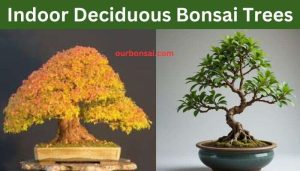
Indoor Deciduous Bonsai Trees
Indoor deciduous bonsai trees bring nature into your home with their unique beauty. These miniature trees shed their leaves seasonally, adding a dynamic touch to your indoor space.
Indoor deciduous bonsai trees offer a unique charm to any space. Their changing leaves bring a sense of nature indoors. These miniature trees are not just beautiful but also easy to care for, making them perfect for beginners and seasoned bonsai enthusiasts alike.
Types Of
Different types of deciduous bonsai trees are available. Each type has its own unique features.
- Japanese Maple: Known for its vibrant fall colors.
- Chinese Elm: Appreciated for its small leaves and elegant shape.
- Trident Maple: Popular for its three-lobed leaves and rapid growth.
- Hornbeam: Valued for its striking bark and leaf texture.
Benefits Of Growing Deciduous Bonsai Indoors
Growing bonsai trees indoors has many benefits. It can enhance your living space and improve air quality.
How To Care For Indoor Deciduous Bonsai Trees
Proper care is crucial for healthy bonsai trees. Follow these simple steps to keep your tree thriving:
- Light: Ensure your tree gets enough natural light.
- Watering: Water your tree regularly but avoid overwatering.
- Pruning: Trim the branches to maintain the desired shape.
- Repotting: Repot your bonsai every two years.
Common Issues And Solutions
Sometimes, indoor bonsai trees face problems. Here are some common issues and their solutions:
- Leaf Drop: May be caused by insufficient light or overwatering.
- Pests: Regularly check for insects and use gentle pesticides.
- Yellow Leaves: Can indicate poor soil drainage or low humidity.
- Root Rot: Ensure proper watering and well-draining soil.
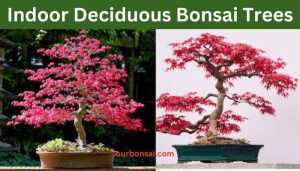
Choosing The Right Pot For Your Bonsai
The right pot is essential for your bonsai’s health. Choose a pot that complements the tree’s size and style.
- Size: Ensure the pot is spacious enough for the roots.
- Drainage: Pots must have good drainage holes.
- Aesthetics: The pot should enhance the tree’s appearance.
- Material: Choose from ceramic, plastic, or clay pots.
Seasonal Care Tips
Caring for your bonsai tree varies with the seasons. Each season requires specific attention.
- Spring: Focus on repotting and pruning.
- Summer: Increase watering and provide shade.
- Fall: Reduce watering and prepare for dormancy.
- Winter: Maintain cool temperatures and reduce light exposure.
By following these tips, you can enjoy the beauty of indoor deciduous bonsai trees throughout the year. Their changing leaves and elegant forms make them a delightful addition to any indoor space.
Best Indoor Deciduous Bonsai Trees
Indoor deciduous bonsai trees, like the Japanese Maple, bring vibrant seasonal changes indoors. These trees offer stunning foliage transformations, adding beauty and tranquility to any home.
Indoor deciduous bonsai trees can add a touch of nature to your living space. They bring beauty and tranquility indoors. Let’s explore some of the best options for you.
Japanese Maple Bonsai
Japanese Maple Bonsai is a favorite among enthusiasts. Its vibrant foliage and elegant structure make it a standout.
- Colors change: Leaves shift from green to red and orange.
- Growth habit: Prefers bright, indirect light.
- Watering needs: Keep soil moist but avoid waterlogging.
- Pruning: Regular trimming maintains its shape.
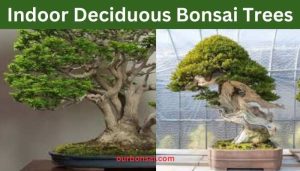
Chinese Elm Bonsai
The Chinese Elm Bonsai is known for its delicate leaves and sturdy nature. It’s perfect for beginners.
- Hardy tree: Adapts well to indoor conditions.
- Leaf size: Small leaves create a dense canopy.
- Light requirement: Needs moderate light.
- Watering: Consistent moisture is key.
Trident Maple Bonsai
Trident Maple Bonsai offers striking three-lobed leaves. It’s a popular choice for bonsai lovers.
It’s appreciated for its seasonal color changes. The tree is easy to shape and maintain. This makes it ideal for both new and experienced growers.
Hornbeam Bonsai
The Hornbeam Bonsai is admired for its unique bark and leaf texture. It’s a charming addition to any indoor garden.
- Bark texture: Smooth and attractive.
- Leaf shape: Oval leaves with serrated edges.
- Light needs: Thrives in bright, indirect light.
- Pruning: Responds well to regular trimming.
Japanese Zelkova Bonsai
Japanese Zelkova Bonsai is a stunning specimen. Its graceful, slender branches and fine-textured leaves are eye-catching.
- Light preference: Enjoys bright, indirect sunlight.
- Watering: Likes moist soil, not soggy.
- Growth rate: Moderate, easy to manage.
- Pruning: Needs regular trimming to maintain shape.
Beech Bonsai
Beech Bonsai is known for its smooth gray bark and lush foliage. It’s a timeless choice for indoor bonsai.
This tree features beautiful, dense leaves. It requires minimal care and is very resilient. It’s perfect for adding elegance to your home.
Ginkgo Bonsai
Ginkgo Bonsai, also known as the Maidenhair tree, is unique. Its fan-shaped leaves and ancient lineage make it fascinating.
- Leaf shape: Distinct fan-shaped leaves.
- Light requirements: Prefers bright, indirect light.
- Watering needs: Keep soil consistently moist.
- Seasonal interest: Leaves turn golden yellow in fall.
These indoor deciduous bonsai trees offer a variety of options. Each one brings its own charm and character to your indoor space.
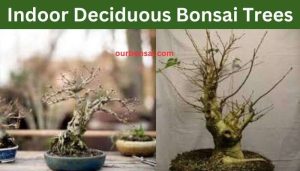
Indoor Deciduous Bonsai Tree Types
Indoor deciduous bonsai trees add beauty and elegance to any space. Popular types include the Japanese Maple, Chinese Elm, and Trident Maple. These miniature trees shed their leaves in winter, creating a unique seasonal display.
Indoor deciduous bonsai trees offer a unique charm. They change with the seasons, bringing nature indoors. Let’s explore some popular types.
Japanese Maple Bonsai
Japanese Maple Bonsai trees are favored for their delicate leaves. These trees showcase vibrant colors throughout the year.
- Colorful Foliage: Leaves turn red, orange, or yellow in autumn.
- Seasonal Changes: Displays new leaves each spring.
- Easy Maintenance: Requires minimal pruning and care.
Chinese Elm Bonsai
Chinese Elm Bonsai trees are hardy and adaptable. They are perfect for beginners and experienced enthusiasts alike.
Trident Maple Bonsai
Trident Maple Bonsai trees have a distinct three-lobed leaf shape. Their bark matures to a beautiful, flaky texture.
- Unique Leaves: Three-lobed leaves set it apart.
- Bark Texture: Develops flaky and textured bark with age.
- Seasonal Colors: Leaves change color in autumn.
Hornbeam Bonsai
Hornbeam Bonsai trees are known for their dense foliage. They thrive indoors and can be shaped easily.
Japanese Zelkova Bonsai
Japanese Zelkova Bonsai trees are admired for their fine, serrated leaves. They are resilient and adapt well to indoor conditions.
- Fine Leaves: Serrated leaves add elegance.
- Resilient: Adapts well to indoor environments.
- Easy to Shape: Ideal for creative bonsai designs.
Crabapple Bonsai
Crabapple Bonsai trees produce lovely, small apples. They are loved for their blossoms and fruit.
- Blossoms: Beautiful flowers in spring.
- Fruit: Small apples add charm.
- Seasonal Interest: Offers year-round beauty.
Serviceberry Bonsai
Serviceberry Bonsai trees are versatile and ornamental. They offer a stunning display of flowers, fruit, and fall color.
These indoor deciduous bonsai tree types can bring beauty and nature into your home. They are delightful to grow and care for, providing a year-round display of changing seasons.
Large Indoor Deciduous Bonsai Trees
Large indoor deciduous bonsai trees add natural beauty to any space. Their changing leaves create a captivating seasonal display. Perfect for bringing a touch of nature indoors.
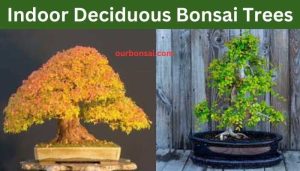
Benefits Of Large Indoor Deciduous Bonsai Trees
Large indoor deciduous bonsai trees bring a touch of nature inside. They offer several benefits that can enhance your living space:
- Air quality improvement: These bonsai trees act as natural air purifiers.
- Visual appeal: They add a stunning focal point to any room.
- Seasonal interest: Their leaves change color, providing year-round beauty.
- Stress reduction: Caring for bonsai trees can be very calming.
Types Of Large Indoor Deciduous Bonsai Trees
Several types of large indoor deciduous bonsai trees are popular among enthusiasts. Each has unique characteristics and care requirements.
Care Tips For Large Indoor Deciduous Bonsai Trees
Caring for these bonsai trees involves several important steps. Follow these tips to keep your bonsai healthy and thriving:
- Watering: Ensure the soil remains moist but not waterlogged.
- Lighting: Place the tree near a window where it can receive indirect sunlight.
- Pruning: Regularly trim branches to maintain the desired shape.
- Feeding: Use a balanced fertilizer during the growing season.
- Repotting: Repot every 2-3 years to refresh the soil and promote growth.
Common Issues And Solutions
Even with proper care, bonsai trees can face some issues. Here are common problems and their solutions:
- Yellowing leaves: Often a sign of overwatering. Reduce watering frequency.
- Pests: Use insecticidal soap to control aphids and mites.
- Leaf drop: Can indicate stress. Check for drafts or sudden temperature changes.
- Root rot: Ensure proper drainage to prevent soggy soil.
Decorating With Large Indoor Deciduous Bonsai Trees
Incorporating these trees into your decor can transform your space. Here are some ideas to get you started:
- Focal point: Place on a stand to draw attention.
- Pairing: Combine with other plants for a lush look.
- Seasonal display: Decorate with small ornaments during holidays.
- Zen corner: Create a peaceful nook with your bonsai as the centerpiece.
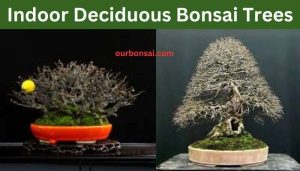
Indoor Deciduous Bonsai Trees For Sale
Indoor deciduous bonsai trees offer a unique touch to any living space. Enjoy the beauty of nature inside your home. These mini trees change with the seasons, bringing a fresh look year-round.
Indoor deciduous bonsai trees bring a touch of nature indoors. They are perfect for those who appreciate the beauty of changing seasons but prefer to stay indoors. If you’re looking to buy one, here’s what you need to know.
Popular Varieties Of Indoor Deciduous Bonsai Trees
There are several popular types to choose from. Each has unique features and care needs.
- Japanese Maple: Known for its stunning fall foliage.
- Chinese Elm: Easy to care for and very hardy.
- Trident Maple: Displays beautiful colors throughout the year.
- Ficus: Popular for its resilience and adaptability.
Best Places To Buy Indoor Deciduous Bonsai Trees
Finding a reliable seller is crucial. You want healthy and well-cared-for plants.
Several places to consider include:
- Local nurseries: Often have a wide selection and knowledgeable staff.
- Online retailers: Convenient and sometimes offer more variety.
- Bonsai specialty shops: Experts in bonsai care and maintenance.
Factors To Consider When Buying
Choosing the right bonsai involves several factors. Make sure you consider these points before purchasing.
- Tree species: Ensure it suits indoor environments.
- Age of the tree: Younger trees are easier to shape.
- Seller reputation: Read reviews and check ratings.
- Price: Ensure it fits your budget.
Caring For Indoor Deciduous Bonsai Trees
Proper care ensures your bonsai thrives. Simple steps can make a big difference.
A few key care tips include:
- Watering: Keep the soil moist, not soggy.
- Light: Place in a spot with indirect sunlight.
- Pruning: Regular trimming maintains shape and health.
- Fertilizing: Use a balanced fertilizer during growing season.
Which Bonsai Are Deciduous?
Certain bonsai trees, like the Japanese Maple and Chinese Elm, are deciduous and lose their leaves in winter. These indoor bonsai trees offer vibrant color changes, adding beauty to your home.
Indoor deciduous bonsai trees bring a touch of nature into your home. They shed their leaves seasonally, offering a dynamic display throughout the year. But which bonsai trees are deciduous? Let’s explore some popular types.
Japanese Maple (acer Palmatum)
Japanese Maple bonsai trees are known for their vibrant fall colors. They are a favorite among bonsai enthusiasts.
- Stunning foliage: Displays red, orange, and yellow leaves in autumn.
- Graceful structure: Features delicate branches and a refined trunk.
- Adaptable: Thrives in various light conditions indoors.
Chinese Elm (ulmus Parvifolia)
The Chinese Elm bonsai is highly recommended for beginners. Its hardy nature makes it easy to care for.
This tree features:
- Small, serrated leaves: Offers a fine, detailed appearance.
- Strong trunk: Develops beautiful, textured bark.
- Resilient: Tolerates pruning and shaping well.
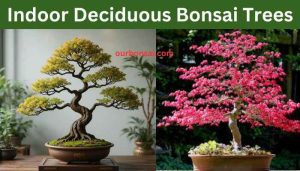
Trident Maple (acer Buergerianum)
Trident Maple bonsai trees are admired for their striking, three-lobed leaves. They change color with the seasons, adding interest to any space.
- Autumn beauty: Leaves turn from green to fiery red and orange.
- Versatile growth: Can be styled in various bonsai forms.
- Easy maintenance: Suitable for both beginners and experienced growers.
Hornbeam (carpinus)
Hornbeam bonsai trees are valued for their elegant, smooth leaves and strong branches. They provide a beautiful display year-round.
- Dense foliage: Creates a lush, full appearance.
- Strong branches: Ideal for intricate shaping and wiring.
- Seasonal change: Leaves turn yellow in fall before shedding.
Beech (fagus)
Beech bonsai trees are perfect for indoor growth. They have delicate leaves that change color throughout the year.
- Attractive leaves: Transition from light green to bronze in fall.
- Smooth bark: Adds visual interest with its light gray color.
- Slow-growing: Requires less frequent pruning and maintenance.
Zelkova (zelkova Serrata)
Zelkova bonsai trees are native to Japan and are known for their fine, delicate leaves. They are often mistaken for elms due to their similar appearance.
This tree boasts:
- Elegant leaves: Small, serrated, and finely detailed.
- Beautiful bark: Develops a rich, textured surface over time.
- Adaptability: Grows well in various indoor conditions.
Embrace the beauty of indoor deciduous bonsai trees. They offer a unique, ever-changing display that brings the essence of nature into your home.
Can Deciduous Bonsai Grow Indoors?
Deciduous bonsai trees can thrive indoors with proper care. They need adequate light, humidity, and regular watering to grow well.
Growing deciduous bonsai trees indoors can be a delightful hobby. These trees lose their leaves in fall, providing a unique indoor experience. But can they truly thrive inside your home?
Light Requirements
Deciduous bonsai trees need plenty of light to grow well. Here’s what to consider:
- Natural light: Place near a south-facing window for direct sunlight.
- Artificial light: Use grow lights if natural light is insufficient.
- Light duration: Ensure 6-8 hours of light daily for healthy growth.
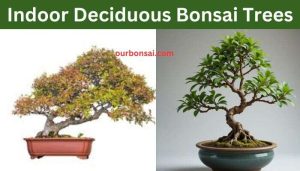
Temperature And Humidity
These factors are crucial for indoor bonsai health.
Deciduous bonsai trees prefer stable temperatures. Avoid placing them near drafts or heating vents. Keep humidity levels around 50-60%. Use a humidity tray or mist the leaves regularly to maintain proper moisture levels.
Watering Needs
Watering is a key aspect of bonsai care.
- Watering frequency: Check soil moisture daily; water when the topsoil feels dry.
- Water quality: Use rainwater or distilled water to avoid mineral buildup.
- Drainage: Ensure the pot has good drainage to prevent root rot.
Pruning And Shaping
Pruning helps maintain the tree’s shape and health.
Regular pruning is necessary for deciduous bonsai. Trim back new growth and remove dead leaves. Use sharp tools to make clean cuts. Wiring can also help shape the tree, but be gentle to avoid damaging branches.
Is Japanese Elm Bonsai Deciduous?
Japanese Elm Bonsai is a deciduous tree. It loses its leaves in winter, making it ideal for indoor bonsai enthusiasts. This bonsai requires bright light and regular watering.
Japanese Elm Bonsai trees, also known as Zelkova, are popular among bonsai enthusiasts. These trees are admired for their striking appearance and ease of care. But are they deciduous? Let’s explore this question.
What Does Deciduous Mean?
Deciduous trees shed their leaves annually. This process is natural and happens in response to seasonal changes. Knowing this helps in understanding bonsai care requirements.
- Annual leaf shedding: Deciduous trees lose leaves once a year.
- Seasonal response: Leaf shedding occurs due to changes in seasons.
- Natural process: It’s a part of the tree’s life cycle.
Yes, Japanese Elm Bonsai trees are deciduous. They exhibit the typical characteristics of deciduous trees, including seasonal leaf shedding.
These trees lose their leaves in autumn. The foliage turns yellow and falls off. This period allows the tree to rest and conserve energy.
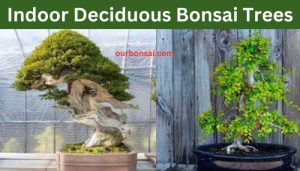
Seasonal Care Tips For Japanese Elm Bonsai
Taking care of a Japanese Elm Bonsai involves understanding its seasonal needs. Here are some tips to help you:
- Autumn: Reduce watering as leaves start to fall.
- Winter: Protect the tree from frost and cold winds.
- Spring: Increase watering and start fertilizing.
- Summer: Ensure adequate sunlight and regular pruning.
Benefits Of Deciduous Bonsai Trees
Deciduous bonsai trees offer unique benefits. They provide a dynamic and changing appearance through the seasons.
- Changing foliage: Enjoy different leaf colors throughout the year.
- Rest period: The tree rests in winter, conserving energy.
- Visual interest: Seasonal changes add to the tree’s beauty.
Challenges Of Growing Deciduous Bonsai
While rewarding, growing deciduous bonsai can pose challenges. Proper care and attention are crucial to maintaining a healthy tree.
- Leaf shedding: Requires clean-up and monitoring.
- Seasonal adjustments: Care routines change with seasons.
- Winter protection: Trees need shielding from extreme cold.
Understanding these points ensures you are well-prepared to care for a Japanese Elm Bonsai.
Do Bonsai Trees Lose All Their Leaves?
Indoor deciduous bonsai trees often shed their leaves during autumn. This is a natural process, signaling the tree’s dormant phase. Regular care ensures healthy growth and vibrant leaves in spring.
Bonsai trees can be a fascinating addition to your indoor garden. They bring a touch of nature’s beauty into your home. Yet, many wonder if bonsai trees lose all their leaves. Let’s explore this topic and understand the reasons behind it.
Seasonal Changes
Bonsai trees can shed leaves due to seasonal changes. Here’s why:
- Autumn season: Trees prepare for winter by shedding leaves.
- Winter dormancy: Trees conserve energy by dropping leaves.
- Spring renewal: New leaves grow back as the weather warms up.
Stress Factors
Stress can cause bonsai trees to lose leaves. It’s important to recognize these factors:
- Watering issues: Both overwatering and underwatering can stress the tree.
- Temperature changes: Sudden shifts can affect leaf retention.
- Pests and diseases: These can weaken the tree and cause leaf loss.
Nutrient Deficiency
Lack of essential nutrients can also lead to leaf drop. A plain paragraph explanation is suitable here.
Bonsai trees need proper nutrients to stay healthy. If they lack essential elements, their leaves may fall off. Regular feeding with balanced fertilizer can prevent this issue. Ensure the tree gets enough nitrogen, phosphorus, and potassium. This helps maintain lush foliage.
Adaptation To Environment
When adjusting to a new environment, bonsai trees might lose some leaves. Here’s a closer look:
- Relocation: Moving the tree can cause temporary leaf drop.
- Light conditions: Adjusting to different light levels can affect leaves.
- Humidity changes: Indoor air can be drier, leading to leaf loss.
Pruning And Care
Proper care and pruning help bonsai trees stay healthy. A plain paragraph explanation is suitable here.
Regular pruning encourages healthy growth and prevents leaf loss. Remove dead or damaged branches to maintain tree health. Also, ensure the tree is in a well-draining soil mix. Proper care routines can minimize stress and keep leaves intact. Regular monitoring helps catch issues early.
Understanding these aspects can help you care for your bonsai tree better. With the right knowledge, you can enjoy a healthy and beautiful indoor bonsai.
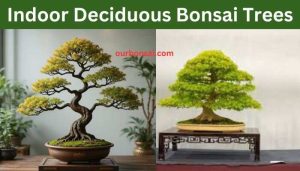
Frequently Asked Questions
Which Bonsai Trees Are Deciduous?
Deciduous bonsai trees include Japanese maple, Chinese elm, and Trident maple. These trees shed their leaves annually. They are popular for their seasonal beauty and adaptability to indoor environments.
Can Deciduous Bonsai Grow Indoors?
Yes, deciduous bonsai can grow indoors. They require adequate light, humidity, and care. Indoor conditions need to mimic their natural environment for optimal growth and health.
Is Japanese Elm Bonsai Deciduous?
Yes, Japanese elm bonsai is a deciduous tree. It loses its leaves in winter. It is known for its attractive foliage and elegant form.
Do Bonsai Trees Lose All Their Leaves?
Deciduous bonsai trees lose all their leaves in autumn. This is a natural process. They regrow new leaves in spring, showcasing seasonal changes.
Conclusion
Indoor deciduous bonsai trees bring beauty to your home. They can thrive indoors with proper care. Choose the right type for your space. Enjoy watching their seasonal changes and unique characteristics. These small trees add a touch of nature to any room.
Explore various options and find the perfect bonsai for you. Happy bonsai growing!
